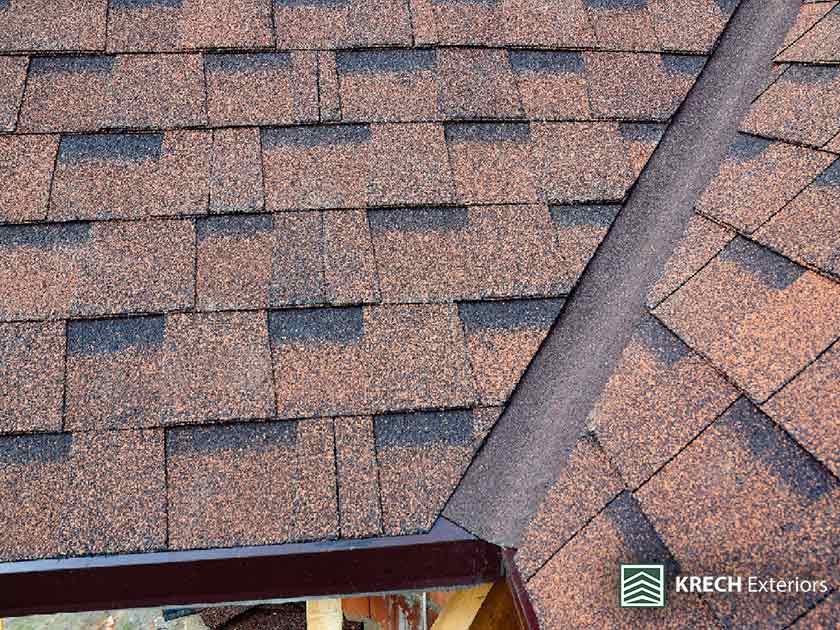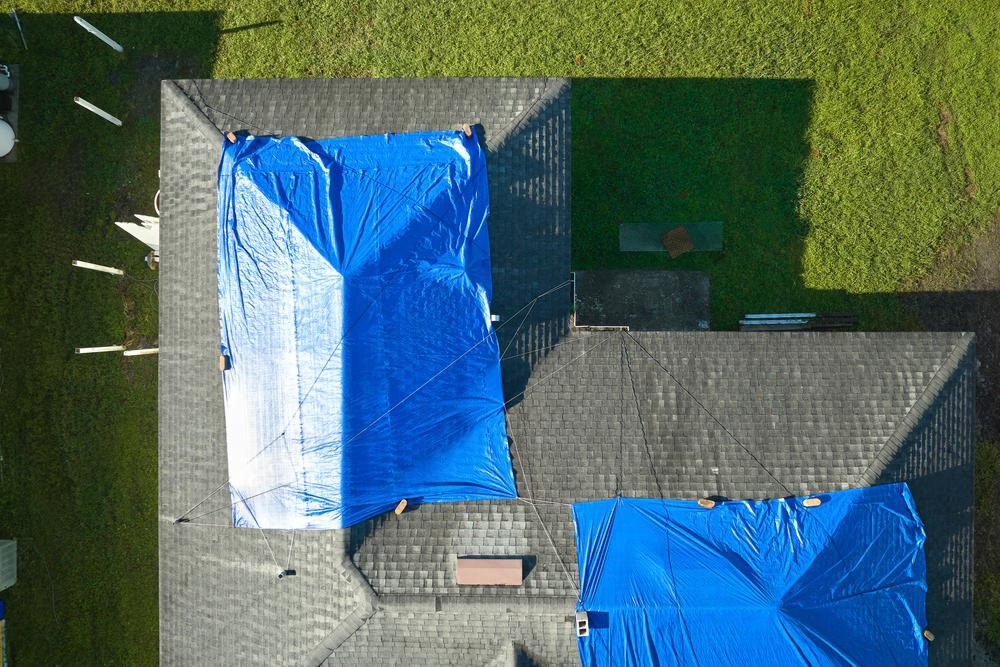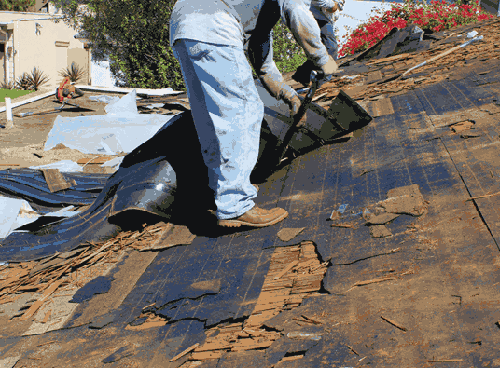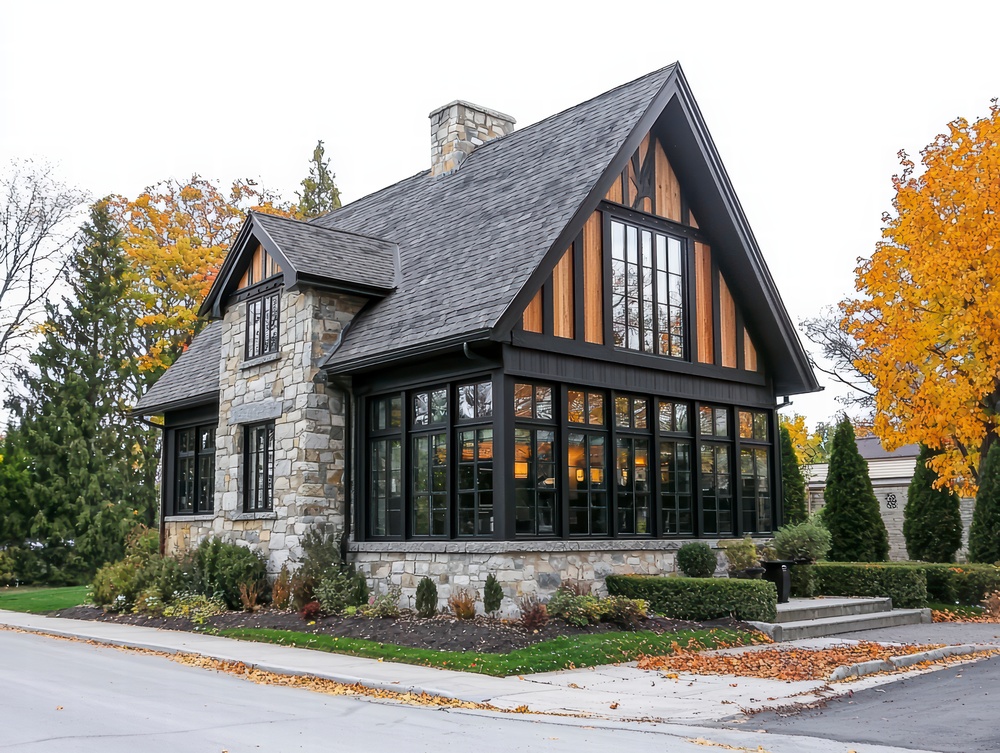Every homeowner knows the importance of shingles, but there’s another component that quietly keeps your roof watertight—roof flashing. Roof flashing plays a vital role in protecting the roof’s integrity and roof’s structural integrity by sealing vulnerable areas against water intrusion. This small but essential element plays a big role in preventing costly water damage.
At Krech Exteriors, we’ve been repairing and installing roofs across the Twin Cities for over 35 years. We’ve seen firsthand how flashing failures can lead to roof leaks, rot, and interior water damage. Roof flashing is important because it prevents water infiltration, which can cause mold growth and compromise the safety of your home. This guide explains what roof flashing is, how it works, and what signs to look for when it needs attention. There are various types of flashings designed to protect different roof penetrations and features.
Key Takeaways
- Roof flashing is a thin metal barrier that directs water away from vulnerable areas of the roof.
- It’s installed around chimneys, vents, skylights, valleys, and roof edges.
- Always use the exact size of flashing to ensure a proper fit and effective water protection.
- A waterproof seal is essential to prevent leaks around roof features.
- Twin Cities weather—especially freeze/thaw cycles—can loosen or corrode flashing over time.
- Damaged flashing is a leading cause of roof leaks in Minnesota homes.
- Regular inspections can catch early problems and protect your home from interior water damage.
What Is Roof Flashing?
Roof flashing is a thin material, often made from sheet metal such as galvanized steel, aluminum, or copper. The choice of flashing material is important for durability, waterproofing, and compliance with building codes. Flashing is designed to seal joints and direct water off the roof, and is installed wherever the roof surface, or roof plane, intersects with a vertical surface or where water runoff concentrates.
Common flashing locations include:
- Chimney bases
- Skylights
- Roof valleys
- Pipe vents
- Dormers
- Eaves and rakes
At each of these locations, flashing pieces are custom cut and bent to fit each roof penetration and vertical surface, ensuring a tight seal and effective water protection.
Roof flashing sizes vary to match the dimensions of each roof plane and feature, providing proper coverage and waterproofing.
How It Works: When rain, snow, or melting ice flows down the roof, flashing channels it away from seams or penetrations and toward the gutters.
Why Flashing Matters in the Twin Cities
In Minnesota, roofs face constant exposure to snow, ice, and heavy rain. Eagan and St. Paul homes experience multiple freeze/thaw cycles each year, which can cause flashing to loosen, crack, or corrode.
Without proper flashing, water can seep under shingles and into your roof deck—leading to mold growth, insulation damage, and structural rot.
Timely repair roof flashing is essential to prevent further water damage and protect your home.
Types of Roof Flashing
a) Step Flashing
Step flashing consists of a rectangular piece of metal bent at a 90-degree angle to fit where the roof meets vertical walls (like dormers or chimneys). Each piece is secured with two nails. It’s installed in layers with each course of shingles. Kickout flashing is installed where the step flashing ends to direct water away from the wall.
b) Valley Flashing
Installed in roof valleys to guide water runoff into gutters. Valley flashing is a flashing piece bent to fit the angle of the roof valley, creating a waterproof seal.
c) Vent Pipe Flashing
A cone-shaped flashing that seals around plumbing vent pipes to prevent leaks.
Selecting the correct pipe size is essential to ensure the flashing piece fits snugly around the roof penetration.
d) Chimney Flashing
Includes base flashing, counter flashing, and saddle flashing—critical for sealing around brick structures. Chimney flashing must be bent to fit the vertical surface of the chimney, creating a waterproof seal that prevents water infiltration.
e) Drip Edge
Installed along roof eaves to prevent water from seeping under the shingles and damaging the fascia. Drip edge is a thin material and a type of flashing piece installed along the edge of the roof plane.
Roof Flashing Materials
Choosing the right roof flashing materials is essential for the long-term performance of your roofing system. The most common options are galvanized steel, aluminum flashing, and copper. Galvanized steel is favored by many homeowners and roofing contractors because it resists corrosion and offers reliable protection at an affordable price. Aluminum flashing is lightweight and easy to work with, making it a popular choice for a variety of roof types. For those seeking both durability and a distinctive look, copper flashing stands out—though it comes at a higher cost, it can last for decades and develops a beautiful patina over time.
When selecting flashing materials, it’s important to consider your local climate, the type of roofing material on your home, and your budget. For example, galvanized steel is well-suited to withstand harsh weather conditions, while copper is often chosen for historic homes or high-end projects. No matter which material you choose, proper installation is key to preventing roof leaks and ensuring a watertight seal. Consulting with experienced roofing contractors can help you determine the best flashing materials for your specific needs and ensure your roof remains protected for years to come.
Flashing for Unique Roof Features
Every roof has its own set of features that require specialized flashing solutions to keep water out. Chimney flashing, for instance, is designed to fit snugly around chimneys, creating a watertight seal that prevents water infiltration where the roof meets the brick or stone. Apron flashing is used at the base of vertical walls or dormers, directing water away from these vulnerable intersections. For homes with skylights, custom flashing is installed to seal the gap between the skylight and the roof, preventing water penetration even during heavy rain.
Plumbing vent pipes are another critical area—vent flashing is shaped to fit around these pipes, ensuring water is directed away from the roof opening. Copper roof flashing is often chosen for its durability and ability to withstand harsh weather conditions, especially on unique or high-value roof features. Roofing contractors must carefully assess each roof’s design and select the right type of flashing for every feature, whether it’s a chimney, vent, or vertical wall, to prevent water damage and maintain the integrity of the roofing system.
Cost and Installation
The cost to install roof flashing can vary widely based on the flashing materials you choose, the size and complexity of your roof, and the specific features that need protection. On average, homeowners can expect to pay between $300 and $1,500 for new flashing, with labor costs for professional installation typically ranging from $25 to $100 per hour. More intricate jobs—such as installing copper flashing or working around multiple roof penetrations—may fall at the higher end of this range.
Proper installation is crucial to ensure your flashing forms a watertight seal and effectively prevents roof leaks. Roofing contractors have the expertise to install kickout flashing, step flashing, and other types of flashing in a way that directs water away from critical areas and protects your home from water damage. Investing in quality flashing materials and professional installation can save you money in the long run by avoiding costly repairs due to leaks or water intrusion. If you’re considering new flashing or a roof replacement, consult with a trusted roofing contractor to determine the best approach for your home.
DIY Considerations
Some homeowners may be tempted to tackle roof flashing installation or repair as a DIY project, but it’s important to understand the risks involved. Improper installation can lead to roof leaks, water damage, and even compromise your roof’s structural integrity. Professional roofing contractors have the training and experience to ensure a proper installation, using the right techniques and materials for each type of roof and flashing surface.
If you decide to proceed with a DIY approach, start by researching the different types of flashing—such as galvanized steel, aluminum, and copper—and select the best option for your roof. Make sure the flashing surface is clean and dry before installation, and use roofing cement to secure the flashing in place. Pay special attention to critical areas like chimneys, vents, and roof penetrations, and focus on redirecting water away from these vulnerable spots to prevent water infiltration and leaks. However, if you’re unsure about any step of the process, it’s always best to consult with a professional roofer. A proper installation is essential to achieving a watertight seal and protecting your home from costly water damage.
Signs Your Roof Flashing Needs Repair
- Water stains on ceilings or walls
- Rust or corrosion on flashing
- Missing or lifted flashing near chimneys or vents
- Ice dams forming at roof edges
- Loose shingles or roof leaks near valleys
Tip: These signs are especially common in older homes across Minneapolis and Lakeville that have been through multiple winters.
If you notice any of these issues, it’s important to repair roof flashing promptly to prevent water damage, mold growth, or further deterioration of your roof’s integrity.
Explore our professional roof repair services
Can Flashing Be Repaired—or Does It Require Replacement?
In many cases, minor flashing damage can be repaired with resealing or replacing a section. However, extensive rust, gaps, or age-related wear may require full replacement—especially if the surrounding shingles or underlayment are compromised. When you repair roof flashing, it is important to use the correct roof flashing sizes and flashing material, such as galvanized steel, aluminum, copper, or plastic, to ensure proper fit, durability, and compliance with building codes.
At Krech Exteriors, we assess flashing integrity during every roof inspection and provide repair or replacement options based on your roof’s age, material, and exposure. Hiring a roofing professional for repair roof flashing ensures the correct selection of flashing material and precise sizing, providing long-term protection and effective waterproofing.
Prevent Flashing Failures with Routine Inspections
The best way to prevent flashing-related leaks is to catch problems early. Krech Exteriors recommends:
- Twice-a-year roof inspections (spring and fall). Inspections should include all flashing pieces, especially on metal roofs and complex roofing systems, to ensure a continuous waterproof seal.
- Post-storm checkups after hail, wind, or heavy snow
- Proactive repair or resealing when small gaps or corrosion appear
Schedule a flashing inspection with our local roofing experts
FAQ: Roof Flashing
How long does roof flashing last? Most metal flashing lasts 20–30 years, but Minnesota weather can shorten its lifespan—especially if installed improperly or left unmaintained.
Can you reuse flashing during roof replacement? In some cases, yes. But if it shows signs of rust, separation, or is bent or damaged, it’s best to replace it during a new roof installation.
Does insurance cover flashing damage? If flashing fails due to a storm or sudden event, it may be covered. Age-related wear typically isn’t. Our team can assist with storm damage claims. A roofing professional can help assess the condition of your flashings and recommend the best course of action.
Is flashing included in a new roof? Yes. At Krech Exteriors, we include new flashing in every full roof replacement to ensure long-term water protection. Reputable skylight manufacturers often provide integrated flashing solutions for skylights to prevent leaks.
Why is flashing so important in valleys and chimneys? These are natural water collection points. Without properly installed flashing, they’re among the first areas to leak and cause costly interior damage. The choice of roof materials and sheet metal used for flashing affects its performance in different roofing systems.






